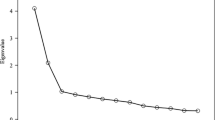Abstract
This cross-sectional study explored gay men's sexual risk behavior from the perspective of three popular conceptual models, the health belief model, the theory of reasoned action, and social cognitive theory. Data were collected from sexually active gay men via anonymous questionnaire containing questions about sexual behavior and items related to the constructs comprising the three models. Using structural equation modeling techniques (LISREL 8), self-reported condom use was examined from the perspective of each theory. The results suggested that a substantial part of the variance in unprotected anal intercourse could be explained by conceptually analogous constructs common to these models. These constructs referred to the cognitive-affective reactions toward condoms and to the social context of using condoms. An additional variable unique to social cognitive theory, self-efficacy, added to the explained variance in the criterion above and beyond the variables that were common to the models. Relevant variables from the three theories were integrated into an expanded self-efficacy model.
Similar content being viewed by others
Author information
Authors and Affiliations
Rights and permissions
About this article
Cite this article
Wulfert, E., Wan, C.K. & Backus, C.A. Gay men's safer sex behavior: An integration of three models. J Behav Med 19, 345–349 (1996). https://doi.org/10.1007/BF01904761
Accepted:
Issue Date:
DOI: https://doi.org/10.1007/BF01904761



